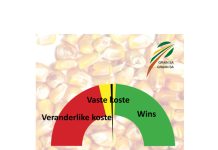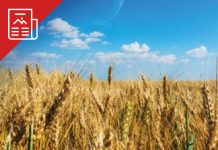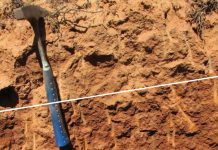Soil does not form by chance, but as a result of the influence of the five soil formative factors: climate, organisms, topography, parent material and time. These soil formative factors control the soil formation processes that determine which horizons form in the soil. It is these horizons that influence a soil’s land use. This article focuses on some of soil formation processes and forms part of a series to highlight this resource.
Soil formation processes
Soil formation is the result of a combination or sequence of soil formation processes. These processes may be simple or highly complex. The type and activity of the processes are determined by the soil formation factors. These soil formation factors were discussed in the previous issue of this series.
Soil formation processes give rise to the horizon differentiation in the profile. All processes may be simultaneously active in a soil, but the eventual result is determined by the dominant process(es).
Soil formation processes may be briefly described as the addition and removal of material, the distribution or redistribution thereof, or the transformation thereof in soil. The materials involved may be one or more of the following: organic material, soluble salts, carbonates, sesquioxides and silicate clays.
The following are examples of soil formation processes that are active in the more common soils in South Africa.
Mineralisation and humidification
Plant growth adds organic material to the soil. The rate of organic material production is determined by the climate (largely rainfall and temperature), as well as by the fertility of the soil. When the organic material is deposited on or in the soil, this organic material may be mineralised, humidified or accumulated.
Mineralisation takes place when the organic material is oxidised and, in the process, releases minerals and plant nutrients into the soil. In this case there is no accumulation or building up of organic material in the soil.
Humidification is the process whereby fresh organic material is converted to more stable humus. This normally takes place under cool, moist climatic conditions and gives rise to horizons with a high humus content. The soil is well-drained, as under water-saturated conditions, accumulation of non-humidified materials will take place by preference.
Accumulation of organic material takes place under poorly drained and/or cool (almost cold) conditions. Under these conditions, microbe activity is slow and less organic material is mineralised or humidified than that which was added and therefore it accumulates. Accumulation of organic material takes place faster in wetter climatic regions, while humidification is predominant in cooler climatic regions and acidic soils. Accumulation may also take place in extremely acidic soils. Under these conditions, there are insufficient basic nutrients for the micro-organisms and therefore the organic material is not oxidised.
Leaching and luviation
Leaching is the process where soluble material (usually salts such as CaCO3, MgSO4 and KCl) are removed from a part of the profile. This gives the horizon a low pH, low base status, low fertility and a bleached appearance (white) at times. Leaching is controlled by rainfall and soil texture. In the wetter climatic regions there is greater leaching of the soil and it is more acidic than in the drier regions. These soils are limed to counter the acidity. In a specific climatic region, sandy soils are leached more than clayey soils because the water flows more rapidly through sandy soils than through clay. Older soils are also usually more leached (more acidic) than younger soils because the older soils have been exposed to rainfall leaching for a longer period.
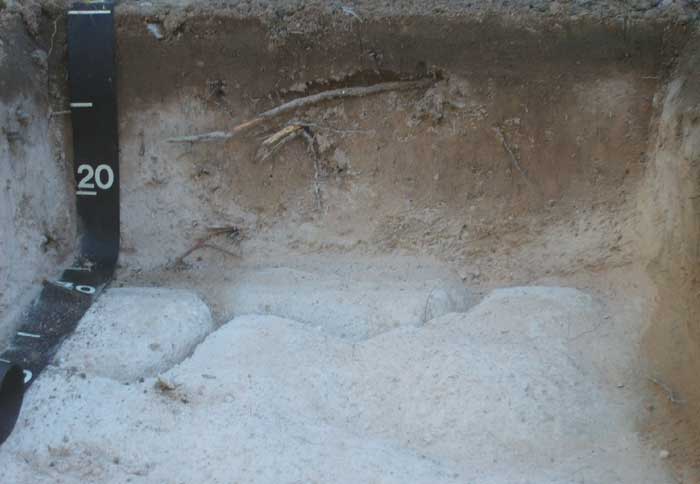
Illuvation (accumulation) of clay led to the formation of the large prisms and the abrupt transition.
Luviation is the process of clay removal (eluviation) and accumulation (illuviation). Clay is mobilised in the uppermost part of the profile, transported vertically or horizontally and deposited in another horizon. The movement of the clay takes place in suspension – in contrast to leaching, where the salts are dissolved.
In extreme cases, the transition of accumulation to the horizon is abrupt or sharp. This gives rise to the term duplex soils (sand layer upon a clay layer). In some cases, the transition is so abrupt that one can follow the transition with the point of a knife.
Gley and plinthite formation
Gley and plinthite formation is dependent on lower redox potential in the soil. Low redox potential is the consequence of water saturation which, in turn, leads to oxygen depletion. Gley and plinthite soils are therefore also referred to as hydromorphic soils.
Gley horizons form in the subsoils where the soil is virtually permanently saturated with water (for close to twelve months a year). Iron (the colouring agent of soils) and manganese are reduced and the soil colour turns to grey. The reduced iron and manganese may be leached to form an E horizon, or it may be accumulated to form a G horizon.
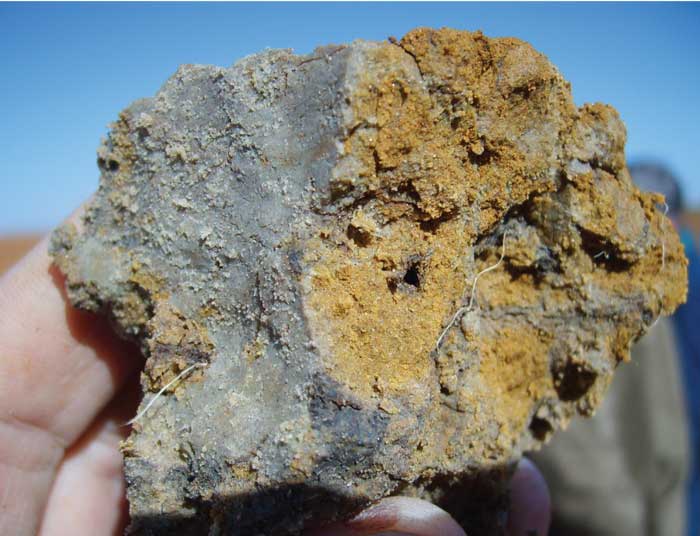
E horizons have a typically homogenous grey colour, while G horizons have mottled, grey, green and/or blue colours. They are usually found in the low-lying areas of the landscape. The grey colours of the G horizons typically occur on the ped surfaces or within the peds (ped = structural unit). In the first mentioned case, G horizons are saturated for shorter periods and are less intensely saturated with water than in the latter case.
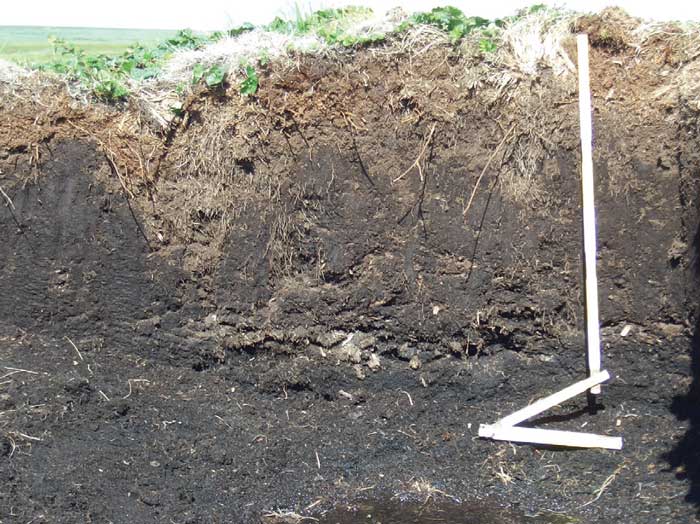
Plinthic horizons form when the iron and/or manganese accumulates in a horizon as a result of oxidation and precipitation under the influence of a fluctuating water level (height of water level changes). These horizons are typically saturated with water for about eight months of the year. This results in a horizon with clear red, yellow and/or black mottles. It is these mottles that are used to identify the so-called “water table soils”. In extreme cases, the iron and manganese can accumulate and consolidate to such an extent that it forms a continuous hard layer. This hard iron layer is also referred to as ferricrete and it is physically very stable. It is therefore ideal for use as a road building material.
Inversion and bioturbation
Inversion is the process which mixes soils and, in so doing, destroys the horizons. Inversion takes place when cracks form in the soil and are filled with soil material from above. When the soil is wetted, it causes the soil to push upwards and, in so doing, moves over the soil itself. This movement results in slickensides and wedge-shaped peds, which are used to identify the process. This process is dependent on the presence of expansive 2:1 (montmorillonite) clay minerals and a prominent dry season.
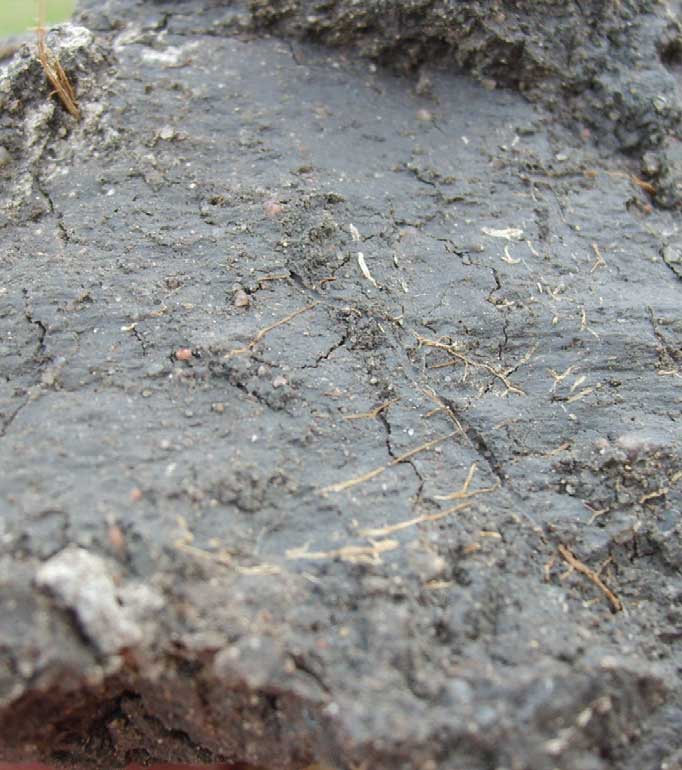
Bioturbation is the process whereby soil is mixed and turned over through the actions of soil organisms (such as earthworms, plant roots, animals that live in the soil and insects). It results in a homogeneous profile with indistinct horizontal differentiation, where horizon development is degraded.
Summary
The soil formation processes lead to a variety of soils, each of which is more or less suitable for a specific purpose. As there is reasonable connection between the morphology of the soil and the active soil formation processes, one can make use of the soil morphology to deduce the active soil formation processes.It is precisely this knowledge of the soil conditions prevailing under specific soil formation processes that is important for the interpretation of the properties and behaviour of a specific soil type; which in turn may be used for the evaluation of its suitability for a specific land use.
For further information, please contact the authors on:
Martiens du Plessis: martiens@nwk.co.za
Prof Cornie van Huyssteen: vanhuyssteencw@ufs.ac.za
REFERENCES
Brady, NC. 1990. The nature and properties of soils. 10th ed. Macmillan Publishing Company: New York.




